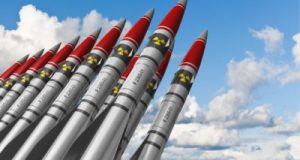Nisar Ahmed
Access to safe drinking water is one of the most pressing challenges faced by today’s world. Currently, there has been an increasing health related apprehension linked with the quality of drinking water. According to Pakistan Medical Association (PMA) report, in Pakistan 30 per cent of all diseases and 40 per cent of all deaths are due to poor water quality. Diarrhoea, a waterborne disease, is reported as the leading cause of death in infants and children in Pakistan while every fifth citizen suffers from illness and disease caused by the polluted water.[1]
WWF-Pakistan, with the support of UNDP and Italian Government and in consultation with Gilgit-Baltistan’s Education Department has installed water purification units to provide safe drinking water to students as per National Drinking Water Quality Standards of Pakistan, in the buffer zone schools of Central Karakorum National Park (CKNP). 85 drinking water purification units of treatment capacity of 20 litres/minute were installed from 2019-2021.
Government schools located in the far flung areas in the CKNP, majority of girls’ high schools,now have access to safe drinking waterfor 23706 individuals. The surrounding communities of the schools are also getting benefit of the filter units to fetch clean water. Risk assessment study were conducted in the targeted villages, before installation of safe drinking water facilities at schools. Purpose of the risks assessment study was to assess the physical and biological drinking water quality in schools and to select appropriate drinking water purification technology. The risk assessment study revealed high contamination levels in all existing drinking water facilities in schools and found it unfit for the human consumption as per national drinking water quality standards of Pakistan. A water quality analysis of the selected schools was conducted prior to the installation of the filtration plant with the support of Pakistan Council of Research in Water Resources (PCRWR), showed the presence bacterial counts higher than the standards set for drinking water in NDWQS of Pakistan and WHO drinking water quality guidelines for developing countries. According to Haider Raza, Regional Head WWF-Pakistan, Gilgit-Baltistan, “Provision of safe drinking water is a basic human right as per United Nations General Assembly Resolution 64/292, which explicitly recognized water and sanitation as a basic human right and acknowledged that water and sanitation are essential to the realisation of all human rights. Water quality hassignificant impact on human health, economy and education”
Gilgit-Baltistan with plenty of crystal water is the water tower for rest of the country; its glaciers provide 50.5billion cubic meters of water to river Indus annually that attributes to 70% of main annual flow.[i] Glaciers and snow deposits are the principal water source in Gilgit-Baltistan. Quantity of water supply reduces in winter season due to reduced glacial melt in most of the urban areas. The melted water enters streams, which subsequently feed main-made channels that bring water into settlement for agriculture, domestic requirements and livestock.[2] In summer the pit water is replenished more frequently. [3]According to a report of t GB-EPA of 2019, “Overall 66 samples (spring and surface water) were collected and tested in GB-EPA laboratory at Gilgit and then sent to Pakistan Institute of Nuclear Sciences and Technology (PINSTECH) Islamabad for further analysis and confirmation of results. Out of 66 samples tested, 79% of the samples were found contaminated with heavy metals; 20 % of the samples were not fit for human consumption according to NDWQS and WHO guidelines.
An official analysis shows that the rapid population growth will lead to “absolute scarcity” by 2025, water with less than 500 cubic metres available per person in Pakistan.[4]Therefore, on priority bases, the government need to focus on legislation, unconventional and advanced technology and public participation to conserve the country’s water resources, and make sure every citizen has access to safe water supply.[5]
Nisar Ahmed, the writer works for WWF-Pakistan and can be reached at nahmed@wwf.org.pk
[1] Pakistan Medical Association report https://www.dawn.com/news/1598924 [2]GWP. The frame work for action for achieving the Pakistan water vision 2025. Global Water partnership and Pakistan water partnership.75 p. 2000 [3]Ahmed,S., M. Faiz., and Joyia. Northern Area Strategy for Sustainable Development. Water for People – Health and Security. 18p. 2003 [4]https://www.dawn.com/news/1381735 [5]https://www.thenews.com.pk/print/520196-40pc-of-deaths-in-pakistan-occur-due-to-poor-water-quality [i]Assessment of Drinking Water Quality “Natural Springs and Surface Water” in Gilgit-Baltistan by EPA Daily Mountain Gilgit Baltistan News Website News website of Daily Mountain Gilgit Baltistan
Daily Mountain Gilgit Baltistan News Website News website of Daily Mountain Gilgit Baltistan




